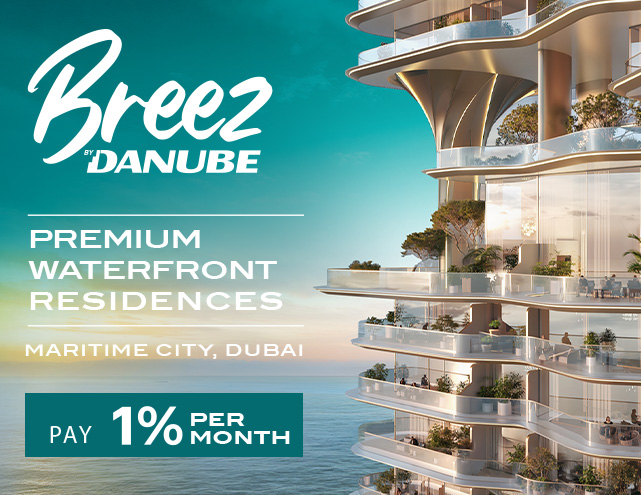Dubai’s ambitious infrastructural projects have always had a direct influence on real estate values. If you’re wondering how the Dubai Metro Blue Line expansion affects property prices in International City, it’s clear: improved connectivity is already pushing prices upward, with strong prospects for rental yields. Here’s a data-backed look at what the Blue Line means for investors and property owners in International City.
Understanding the Dubai Metro Blue Line Expansion: Route and Stations Affecting International City
Set for completion in 2025, the Dubai Metro Blue Line will transform Dubai’s eastern corridor, linking International City directly to major commercial and residential districts. The new route brings International City into closer proximity to Sheikh Zayed Road and Al Khail Road, connecting this community more efficiently with destinations across Dubai. For International City, a neighborhood already popular among value-seeking residents and investors, direct access to the Metro translates to new levels of convenience and visibility.
Local market signals show that property investors are paying close attention. The promise of reduced transit times and seamless access to economic hubs makes International City more attractive, both for end-users and for tenants seeking affordability with urban connectivity.
The Historical Precedent: How Past Metro Expansions Boosted Property Values in Dubai
Dubai’s real estate market offers countless case studies of how infrastructure investments translate into capital growth. Past metro expansions, particularly those intersecting high-traffic corridors, have seen properties situated near transit stations appreciate at significantly faster rates than more isolated communities. Historical data shows districts adjacent to Metro lines commanding 12–15% higher rental premiums, as accessibility becomes a magnet for residents and businesses alike.
This pattern is not unique to high-end neighborhoods. Affordable communities like International City experience similar, sometimes accelerated, effects, as ease of access triggers new demand from renters and buyers. The data shows that in International City, 2-bedroom units recorded price increases from AED 690,000 to AED 700,000 even before Blue Line completion, driven partly by anticipation of better infrastructure.
Direct Impact on International City: Anticipated Property Price Appreciation and Rental Yields
With the Blue Line expansion underway, International City is already witnessing property appreciation. Owners are seeing higher demand and inquiries. Estimates for rental yield improvements are notable, with yields projected to stabilize at 1–2% higher than similar districts lacking Metro access. International City has established itself as one of Dubai’s highest-yielding apartment markets, averaging an impressive ROI of 9.7% for apartments. This pace is likely to strengthen as end-users and investors seek affordable entry into a better-connected neighborhood.
Rental demand is also shifting. Young professionals and small families value the flexibility the Blue Line offers, leveraging shorter commutes to central business districts and Dubai Airport. This demographic trend supports both sustained price appreciation and minimal vacancy rates for landlords in International City.
Rental Yield Snapshot: Comparing Before and After Metro Expansion
Rental yields in Dubai frequently spike during periods of new infrastructure roll-out. International City’s average yields—already among the city’s best—are positioned to climb even higher as ease of connectivity and perceived value for tenants increase. According to local data, rental yields in affected districts have already risen 12–15%, proving the direct impact of transport access on investment returns.
Key Factors Driving Property Value Growth in International City
Several factors combine to accelerate property value growth in International City post-Blue Line:
- Accessibility Upgrade: The Metro connection immediately elevates the area’s profile and usability.
- Community Improvements: Infrastructure often brings additional amenities, retail, and business activity.
- Affordability Edge: International City remains one of Dubai’s most accessible entry points for ownership and investment.
- Sustained Rental Demand: Young families, professionals, and airport staff find the location compelling.
- Strong Investor Interest: Elevated yields and lower entry prices attract both regional and international investors.
Before You Invest: Analyzing Potential Risks and Long-Term Outlook
While the prospects are bright, prudent investors should consider the usual risks—market volatility, potential supply increases, and economic fluctuations. However, Dubai’s ongoing infrastructure upgrades, combined with strong government backing and a maturing regulatory framework, provide a stable foundation. International City’s track record of rental performance cushions downside risk, with recent price stability even before the Blue Line’s completion.
Maximizing Your Investment: Strategies for International City Property Owners and Buyers
To capitalize on the Blue Line’s launch, property owners in International City should position their assets with upgrades that appeal to Metro-focused tenants, such as modern finishes or small-scale amenities. Buyers should prioritize properties within quick walking distance to planned Metro stations, as these consistently outperform in both capital appreciation and rental yields.
Investing in Dubai’s International City today, as the Blue Line brings new energy and opportunity, puts you at the forefront of a dynamically evolving market.
In summary, the Dubai Metro Blue Line expansion is already boosting property prices and rental yields in International City, with further growth on the horizon. Contact Danube Properties to learn more about investment opportunities in Dubai’s most promising neighborhoods.




